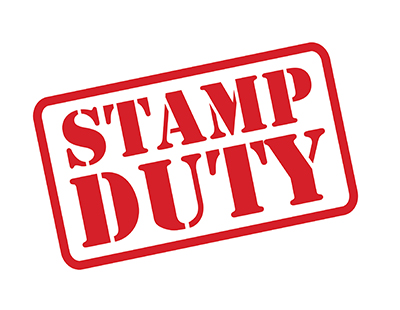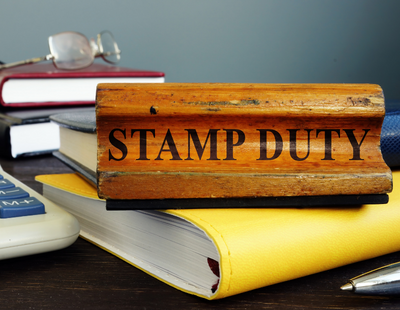What other conditions must be met?
In general terms, the additional charge to SDLT will apply to acquisitions of residential property where:
+ The purchase price is £40,000 or more;
+ The purchaser already owns another residential property (with a market value of £40,000 or more); and
+ The dwelling being purchased is not replacing the purchaser’s only or main residence.
As a result, this additional SDLT charge will apply to most residential property acquisitions by landlords. There are some limited exemptions for properties purchased whilst subject to a lease with more than 21 years to run, but these cases will be rare.
What else do I need to consider?
The rules are complex. It is not possible to provide all the detail in a brief article, but some points that are worth noting are:
+ These rules apply somewhat unfairly to married couples / civil partners – property ownership is aggregated.
+ Where a purchase is made jointly, the additional SDLT charge will apply to the whole transaction if any one of the purchasers, when considered individually, would be caught by these rules.
+ Some purchases, which one might not expect to be caught, can still fall within these rules. Let’s consider an individual who owns one or more rental property for investment (or even a holiday home abroad), but – perhaps due to their job requiring a lot of travel – is only now acquiring a residential property as their home. Unless they dispose of all properties before the purchase, the additional SDLT charge will apply, even though it is genuinely being purchased as their main home.
+ The exemption initially suggested for limited companies owning more than 10 residential properties was not dropped. Companies – and certain types of trusts – will fall within the scope of these rules regardless of the number of properties they own.
Are there any ways to reduce the impact of these changes?
There are certain transactions that will necessarily fall outside the scope of theserules, but this will mainly be limited to replacementsof main residences. This requires a disposal of the replaced property (within a period of three years of the acquisition), preventinglandlords from “hopping” between homes to avoid these rules.
However, some reliefs are also available:
+ Where more than one property is purchased in a single transaction, multiple dwellings relief may be available – this ensures that the “average” cost is used when calculating the SDLT charge. Although the 3% will still apply, this can significantly reduce the liability.
+ There are also scenarios in which the potentially lower “commercial” rates of SDLT can apply. This includes acquisitions of “mixed use” properties (such as a shop, with a flat above); purchases of more than six individual dwellings in a single transaction; and certain “linked” purchases where a commercial property is purchased alongside a residential.
This is a brief summary and other options may be available. Where a significant charge to SDLT is likely to arise advice should be sought on the best way to structure the transaction, and the reliefs that may be available, to reduce costs on acquisition.
Summary
In summary, the charge to SDLT on additional residential dwellings will increase the cost of future acquisitions for landlords, and many other taxpayers. Careful consideration should be given to the viability of future acquisitions, in light of the reliefs that may be available. Where the tax cost is considered excessive, landlords may wish to consider using their funds to invest in commercial properties, pay down existing lending, or invest in other asset classes.
Example:
Comparison of acquisition of a “residential dwelling” for £300,000:
|
Unaffected Taxpayer (i.e. first purchase)
|
|
|
Affected Taxpayer (i.e. Landlord)
|
|
SDLT Rate:
|
|
|
SDLT Rate:
|
|
| |
|
|
|
|
|
0% on the first £125k
|
£0.00
|
|
3% on the first £125k
|
£3,750.00
|
|
2% on the next £125k
|
£2,500.00
|
|
5% on the next £125k
|
£6,250.00
|
|
5% on final £50k
|
£2,500.00
|
|
8% on final £50k
|
£4,000.00
|
| |
|
|
|
|
| |
£5,000.00
|
|
|
£14,000.00
|
In this instance the landlord faces an additional £9,000 in acquisition costs (or, in other words, has seen his SDLT bill increase by roughly 200%).
This article was written by Adam Owens, senior property tax advisor, tax planning and investment specialist OneE Group.
Want to comment on this story? Our focus is on providing a platform for you to share your insights and views and we welcome contributions.
If any post is considered to victimise, harass, degrade or intimidate an individual or group of individuals, then the post may be deleted and the individual immediately banned from posting in future.
Please help us by reporting comments you consider to be unduly offensive so we can review and take action if necessary. Thank you.















.png)






Join the conversation
Jump to latest comment and add your reply
This paragraph does not make sense:
"The exemption initially suggested for limited companies owning more than 10 residential properties was not dropped. Companies – and certain types of trusts – will fall within the scope of these rules regardless of the number of properties they own."
It says the exemption was "not dropped" but then goes onto say companies fall within the rules regardless of the number of properties!
Does anyone know if there is this exemption or not? Could be quite useful!!
thanks
Luke
Thanks for your comment Luke - I think that this may have been a tweak by the editor to try to make it sound a little less "technical", but the meaning may well have been lost on the way!
Unfortunately the exemption was not introduced into legislation - despite being touted when the rules were first announced.
There are some means to reduce the SDLT liability, such as those highlighted in the article, and a few others, but ultimately there will rarely be a "silver bullet" to purchasing additional residential properties without a significantly increased liability to SDLT in the future.
Please login to comment